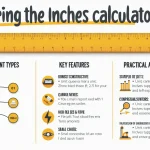Minutes to Decimal Converter
Is this tool helpful?
How to use the tool
- Enter minutes — type any non-negative whole number. Example inputs: 67 or 142.
- Choose decimal places — select 2, 3 or 4 to set rounding precision.
- Read the result — the converter shows “minutes = decimal hours”.
Formula
Divide minutes by 60:
$$ \text{Decimal Hours}= rac{\text{Minutes}}{60} $$Example calculations
- 67 min → $$ rac{67}{60}=1.1166…$$ → 1.117 (3 decimals).
- 142 min → $$ rac{142}{60}=2.3666…$$ → 2.367 (3 decimals).
Quick-Facts
- 1 hour = 3 600 s, fixed by SI (BIPM SI Brochure, 2019).
- Payroll exports usually use two-decimal hours (American Payroll Association, 2021).
- U.S. DOL permits rounding only if neutral to employees (U.S. DOL Fact Sheet #53, 2020).
- ISO 8601 allows decimal-hour duration notation (ISO 8601:2019).
FAQ
What is decimal-hour time?
Decimal-hour time expresses minutes as fractional hours, easing addition and multiplication for payroll and analytics (ISO 8601:2019).
How does the converter work?
The script divides the entered minutes by 60, then rounds to the chosen precision—no network connection needed (Mozilla MDN, 2023).
Why do payroll systems prefer decimal hours?
Two-decimal hours simplify wage formulas and reduce rounding disputes (American Payroll Association, 2021).
How do rounding rules affect pay?
“Employers may round to the nearest quarter-hour only when the practice is unbiased” (U.S. DOL Fact Sheet #53, 2020).
Can I convert hours and minutes together?
Add minutes within the hour to hours × 60, then convert the total minutes.
Is 60 always the divisor?
Yes. The SI defines one hour as exactly 60 minutes or 3 600 seconds (BIPM, 2019).
What precision should I choose?
Use 2 decimals for payroll, 3–4 for research needing finer granularity (NIST Handbook 44, 2020).
Does the converter store my data?
All calculations occur in your browser; no data leaves your device (Mozilla MDN, 2023).
Important Disclaimer
The calculations, results, and content provided by our tools are not guaranteed to be accurate, complete, or reliable. Users are responsible for verifying and interpreting the results. Our content and tools may contain errors, biases, or inconsistencies. We reserve the right to save inputs and outputs from our tools for the purposes of error debugging, bias identification, and performance improvement. External companies providing AI models used in our tools may also save and process data in accordance with their own policies. By using our tools, you consent to this data collection and processing. We reserve the right to limit the usage of our tools based on current usability factors. By using our tools, you acknowledge that you have read, understood, and agreed to this disclaimer. You accept the inherent risks and limitations associated with the use of our tools and services.







